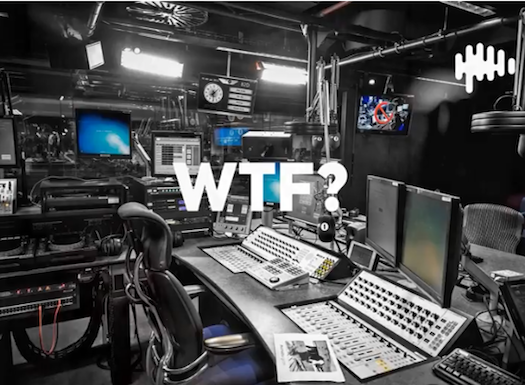Dan McQuillan has been rethinking radio broadcasting technology for many years.
Decades ago he invented the iconic telephone system Phone Box and has been pioneering new approaches to radio technology ever since then.
What should be the philosophy for modern studios when everything is digital?
In a presentation to a technology roadshow in New Zealand, McQuillan floats some new ideas about what makes a good radio studio and reveals some of the things he has discovered while working with technologists at the BBC to design radio studios of the future.
“Radio still reaches large numbers of people, but the problem is that the way our audiences consume our information is changing,” he asks an audience of technologists.
“What was the first thing you touched this morning when you woke up? (laughter) 80-90% of us touch our phone before we touch our loved one.
“Because of changing habits and habitat, we have to reconsider the whole way our content is produced and consumed. My job is to help broadcasters make compelling creative content that will reach their audiences on all the platforms used by the audience.”
So what does this mean for radio technology?
It used to be that the more buttons there were, the better the technology… Now it is the opposite – fewer buttons but more functionality.
“We are still making studios with lots of buttons and lights, but do we really need to be doing that now?
“A big console with lots of lights and buttons looks to the iPad generation like something that fell to earth from a 1960’s satellite. We can do better than that for the studios of the future.”
Broadcast Bionics is working with BBC to develop the best studios that are fit for the internet and the new modern broadcasting environment. As part of that research they asked broadcasters what are the most important things they need in a studio:
“After all the research there were only two main things people asked of studios: Cushions and daylight.
“They didn’t say lights and buttons or gadgets, they wanted the right feel in the studios.
“When probing further for the most important technical feature in studios of the future the answer was still not lots of buttons and lights, it was ‘they just have to work.’ “
Studios of the future will be listening and watching what you are doing, analyzing, reacting and learning, so that the equipment can help the broadcaster engage their audience via all the applications that are needed. McQuillan calls them ‘social studios’ or ‘bionic studios.’
The Broadcast Bionics’ Phonebox has also changed its name to reflect the changing technology and functionality needed in modern studios, and is now known as Bionic Studio.
“The old name was confusing – it started as a talk phone system, but now with so much added it is much more than that…
“Machines have to be smarter so that the broadcast teams can do cleverer things. Radio has the content, but we need to put in the extra things, such as pictures, to make that content sharable.
“People share content not because they like your station, it’s because they like their friends… and they want to share something with them to make them happy, to make them think, to start a discussion, etc…
“Stop using social media as a branding exercise and start making it something emotionally engaging that people will want to share with their friends.”
Some of McQuillan’s other key trends to look out for in the new sharable world of intelligent radio studios are:
- Make your content watchable by adding videos and text
- Give your listeners reasons to share your content
- Listen to what the listeners are saying via social media and bring it back to your show
- Use face recognition and voice to text transcriptions to index and access content to quickly edit and share it
- Uncover trends, sentiment and engagement levels and use them to make then best content
- Use object-based non-destructive production techniques (not a digital mixer, but a digital unmixer)
- Deliver the content anywhere
- Use Web RTC encoding to deliver high quality low latency audio/video that can be delivered on any device
- People listen to more radio through smart speaker devices, make sure you are on these devices and can receive what people say to the voice recognition system back at your studio. “If people shout at the radio, now we can hear them. If they ask who is being interviewed, make sure the smart speaker can tell them.”
The last 7 minutes of the video shows some of the applications of the new technology being used at BBC Local Radio, using a product called ViLoR (Virtual Local Radio).
Related report: Innovative solutions for text and social media from PhoneBox
More information: Broadcast Bonics
Distributor: AVC Australia, 1800 631 728, [email protected].

